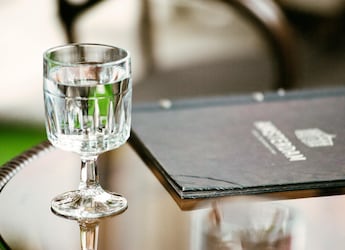What is the first thing that comes to mind when someone mentions the word 'gond'? Let us guess, your answer would most probably be the quintessential gond ke ladoo. Gond is a type of edible gum that is known to offer several health benefits and is commonly used in desserts, bakery items, and beverages. However, there is another type of gond, which was quite popular back in the day - gond katira. While this too is an edible gum, it's not the same as gond. Many people confuse the two for being the same, especially those from the young generation. So, how should one differentiate between the two? To help you out, we have listed some key differences that set these edible gums apart.
What Is Gond?
Gond is an edible gum used as a thickening agent in several foods. It is pale yellow in colour and has small crystals. Gond tends to dissolve when soaked in water for a period of 5 to 6 hours or overnight. It possesses warming properties, making it great for adding to desserts like ladoo and panjiri during the winter months.
What Is Gond Katira?
Unlike gond, gond katira is completely translucent. Its crystals are also slightly larger in size as compared to gond. When dissolved in water, gond katira fluffs up instead of dissolving. Instead of providing warmth, gond katira has cooling properties, making it an excellent addition to your summer diet.
Also Read: Is Gond Sherbet Safe To Drink During Summer? The Answer Will Surprise You
Photo Credit: iStock
Here Are Some Key Differences Between Gond And Gond Katira:
1. Appearance
The most striking difference between gond and gond katira is their appearance. When placed together, you'll notice that gond is slightly darker in colour. It is translucent but with a slight hint of pale yellow, setting it apart from the completely translucent gond katira. The crystals of the former are also smaller in size compared to the latter.
2. How They React In Water
Another point of differentiation between the two is how they react in water. If you soak gond in water overnight, it will end up dissolving by morning. On the contrary, gond katira tends to fluff up over time, and you'll notice that it has become a jelly-like substance.
3. Difference In Properties
This is a point that most people are unaware of. Often confused for having the same properties, the reality is quite the opposite. Gond has warming properties, which is why you often find it as an ingredient in quintessential Indian desserts like ladoo during winters. On the other hand, gond katira has naturally cooling properties and is best for use during the summer season.
Also Read: How To Make Sattu Powder At Home, And Tips For Proper Storage
4. Usage
Both gond and gond katira are used as a thickening agent, but in different ways. The former is typically added to desserts like panjiri during winters, whereas the latter is added to summer beverages like shikanji, lemonades, smoothies, etc. Gond katira is even added to puddings.
So, the next time you find yourself confused about differentiating between gond and gond katira, you'll know exactly what sets them apart.
